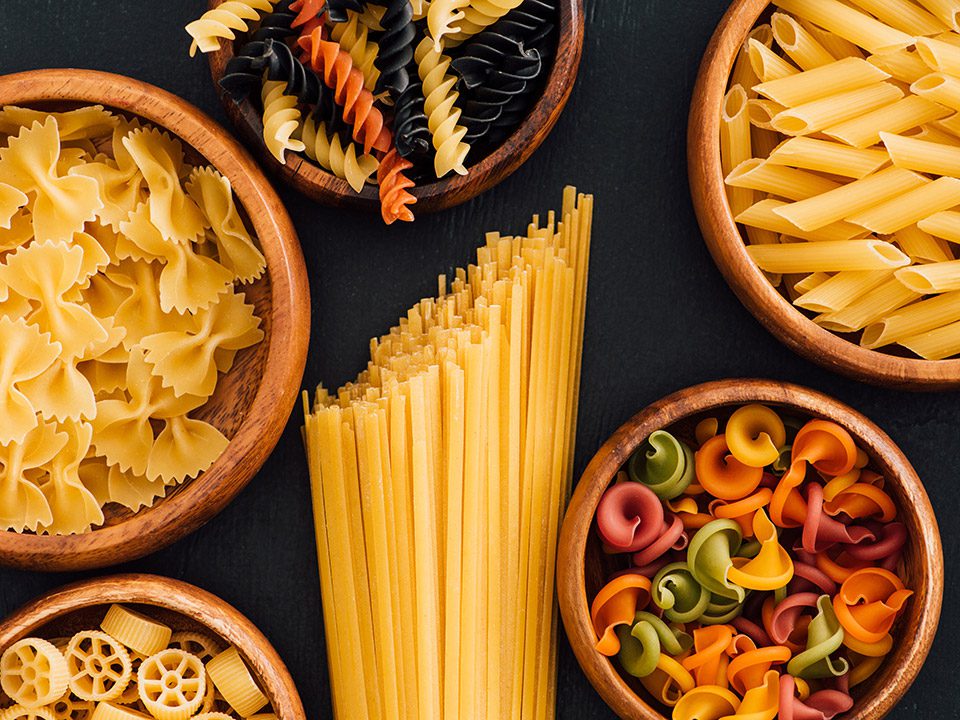Pasta, one of the world’s most beloved culinary exports from Italy, is a versatile and delicious staple found in pantries across the globe. Whether it’s swirled in a robust tomato sauce, tossed in a creamy alfredo, or layered in a hearty lasagna, pasta’s inherent ability to adapt to myriad flavors and preparations is remarkable. This article will delve into the delightful world of pasta, exploring its various types, renowned dishes, some delicious recipes, and where to find the best pasta in the world.
Pasta has several nutritional benefits, mainly due to its macronutrient content:
- Carbohydrates: Pasta is a rich source of carbohydrates, which are the body’s primary energy source.
- Protein: Depending on the type, pasta can be a good source of protein. Whole-grain or legume-based pastas often contain more protein than traditional versions.
- Fiber: Whole-grain and legume-based pasta varieties also provide a substantial amount of dietary fiber, which is important for gut health.
- Low in Fat: Pasta is typically low in fat, particularly saturated fat, which is beneficial for heart health.
- Vitamins and Minerals: Whole-grain pastas can be a good source of B vitamins and iron.
Remember that while pasta can be a healthy part of your diet, it’s important to pay attention to portion sizes and what you’re adding to it. Pairing pasta with a variety of vegetables, lean proteins, and healthy fats can create a balanced, nutrient-rich meal.
Types of Pasta
From the lengthy spaghetti to the butterfly-like farfalle, pasta comes in a multitude of shapes and sizes, each one best suited to a particular type of sauce or dish.
- Spaghetti: Perfect for marinara, meat sauces, or a simple aglio e olio (garlic and oil), spaghetti is the most ubiquitous type of pasta.
- Fettuccine: Thicker and flatter than spaghetti, fettuccine is usually paired with heavier sauces like alfredo or bolognese.
- Penne: This tube-shaped pasta is ideal for chunkier meat or vegetable sauces, which get caught in the pasta’s hollow center.
- Farfalle: Known as ‘bow-tie pasta’, farfalle works well in pasta salads or with creamy, rich sauces.
- Lasagna: Wide, flat sheets of pasta used in the classic layered dish of the same name, typically with a meat sauce, cheese, and béchamel.
Best Pasta Dishes and Recipes
Spaghetti Carbonara: This Roman dish is a simple mix of spaghetti, eggs, cheese (Pecorino Romano or Parmigiano-Reggiano), pancetta, and black pepper. The trick is to mix the raw eggs with the hot pasta to create a creamy sauce without scrambling the eggs.
Fettuccine Alfredo: Fettuccine Alfredo is a rich, creamy pasta dish that’s surprisingly easy to make. Simply melt butter, mix it with heavy cream, and toss with cooked fettuccine. Sprinkle generously with Parmesan cheese and enjoy.
Lasagna: Lasagna is a comforting, versatile dish that can be adapted to various preferences. A traditional recipe involves layering lasagna noodles with a hearty Bolognese sauce, a creamy béchamel, and generous amounts of cheese, then baking until golden and bubbly.
Where to Try the Best Pasta in the World
Italy, being the birthplace of pasta, undoubtedly serves up the best dishes.
Rome: Try classic Roman pasta dishes like Carbonara, Amatriciana (tomato, guanciale, and pecorino cheese), and Cacio e Pepe (cheese and pepper) at restaurants like “Roscioli Salumeria con Cucina” and “Trattoria da Danilo.”
Bologna: Known as the culinary heart of Italy, Bologna is the place to try Tagliatelle al Ragu (classic Bolognese sauce). Head to “Trattoria di Via Serra” for an authentic experience.
Here are a couple of healthy pasta recipes you might enjoy:
1. Veggie-loaded Whole Wheat Pasta
Ingredients:
- 2 cups whole wheat pasta
- 2 tablespoons olive oil
- 1 medium onion, diced
- 2 cloves garlic, minced
- 1 zucchini, chopped
- 1 bell pepper, chopped
- 1 cup cherry tomatoes, halved
- 1/2 cup basil, chopped
- Salt and pepper to taste
- Grated Parmesan for topping (optional)
Instructions:
- Cook the pasta according to package instructions. Drain and set aside.
- In a large pan, heat the olive oil over medium heat.
- Add the onion and garlic, sautéing until fragrant.
- Add the zucchini, bell pepper, and cherry tomatoes. Cook until softened.
- Combine the cooked pasta with the vegetables in the pan. Stir in the chopped basil and season with salt and pepper to taste.
- Serve hot, topping with grated Parmesan if desired.
2. Lemon Garlic Shrimp Pasta
Ingredients:
- 2 cups pasta of choice
- 2 tablespoons olive oil
- 1 lb large shrimp, peeled and deveined
- 4 cloves garlic, minced
- Zest and juice of 1 lemon
- 1/2 teaspoon red pepper flakes (optional)
- Salt and pepper to taste
- Fresh parsley, chopped for garnish
Instructions:
- Cook the pasta according to package instructions. Drain and set aside.
In a large pan, heat the olive oil over medium heat. Add the shrimp and cook until pink, about 2-3 minutes per side. Remove the shrimp from the pan and set aside.
In the same pan, add the garlic and red pepper flakes (if using). Sauté for a minute or until the garlic is fragrant. - Stir in the lemon zest and juice. Bring the mixture to a simmer.
- Add the cooked pasta and shrimp back into the pan, tossing to coat in the lemon garlic sauce. Season with salt and pepper to taste.
- Serve hot, garnishing with chopped parsley.
- These are just a couple of examples, but pasta is incredibly versatile. You can experiment with different types of pasta, sauces, and additions to find what you like best.


